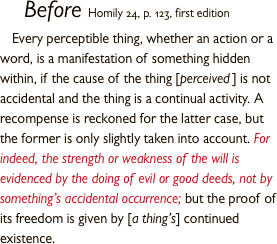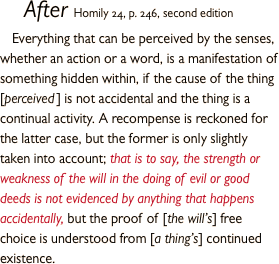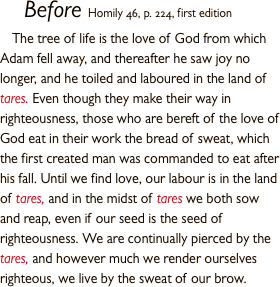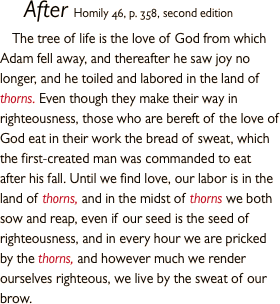 |  | |||
 |  | |||
 |  | |||
Holy Transfiguration Monastery Publications, Inside our Books and the Sources behind them, is a companion site to www.thehtm.org.
Copyright © 2012, Holy Transfiguration Monastery, Brookline, MA. All rights reserved. Home Page | About • Contact | Terms of Use
What’s New in the Second Edition: 3. Corrections

Textual Corrections
Initially the only major change we contemplated for the second edition of the Ascetical Homilies was to reformat it from scratch for easier reading, while correcting typos that we had found and looking into a list of textual questions that came up in the two decades plus of reading it.
No correction or revision was made without consulting the Syriac and Greek. The procedure was not to compare the English to the Syriac and Greek from beginning to end, but to read the English with extreme care from beginning to end, and then examine in the original every passage that seemed obscure or in any way questionable.
The more we checked the text, the more passages we found that needed correction. While the text of the first edition overall was sound, there was no excuse not to correct such passages for the second edition.
In some homilies only a phrase or two was changed; in others, entire passages were retranslated.
Three corrections of the many that were made are shown at left; by far the most significant single correction in the second edition – perhaps without another mistake of the same magnitude in the first edition – is examined in detail here.
The point being made here is that strength of will in doing good or evil is shown not by what happens accidentally, but persistently – not that strength of will is shown in doing good or evil as the first edition has it.
The Syriac and Greek (and the Latin of the 1497 edition) all have “thorns” (a reference to Gen. 3:18) which prick, not “tares,” which do not.
The Greek ek tes agapes autou could mean either “out of love for [lit. of] Him”’ or “because of His love.” The Syriac shows without any ambiguity that the latter meaning, in addition to saying something remarkable rather than sentimental, is correct.
